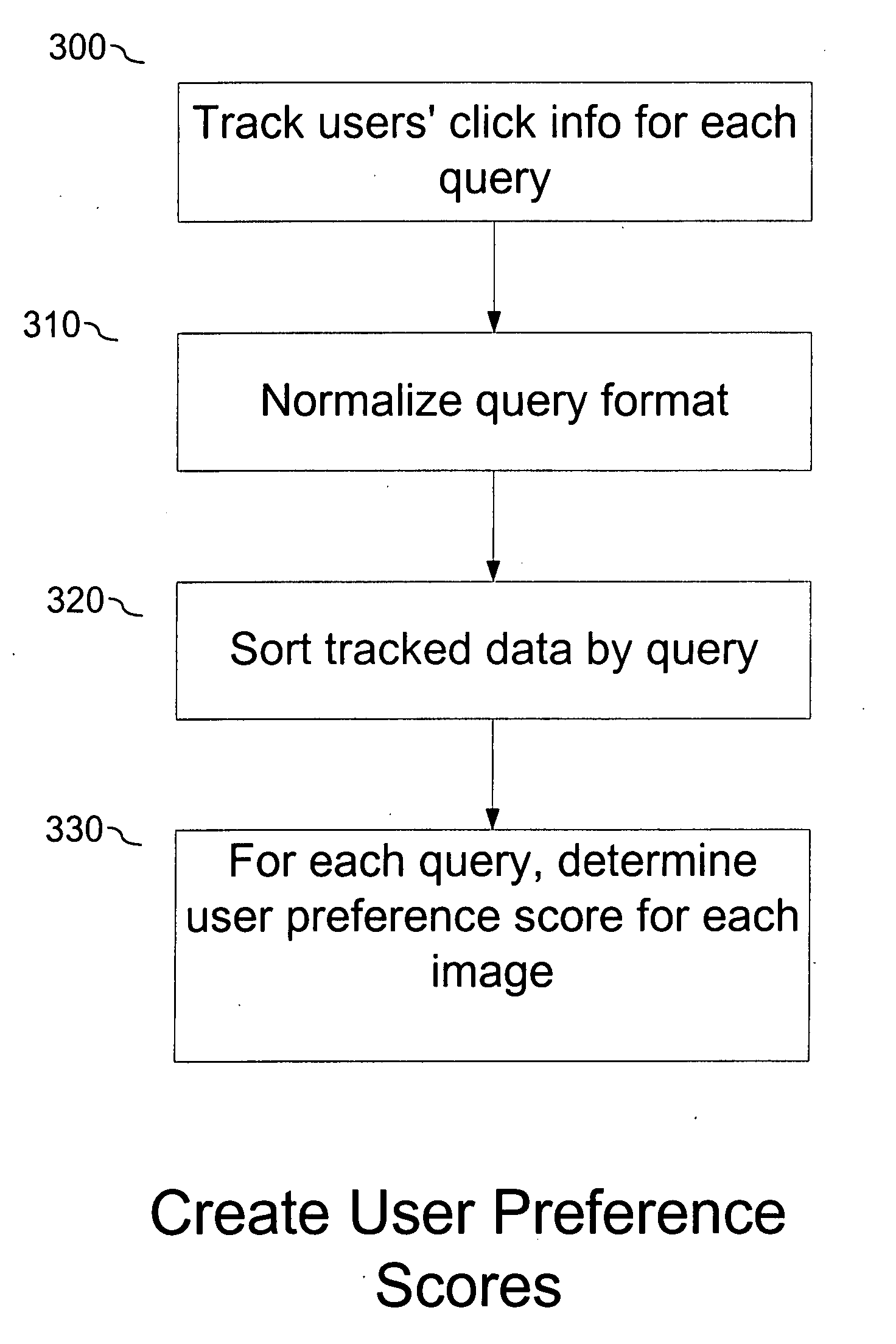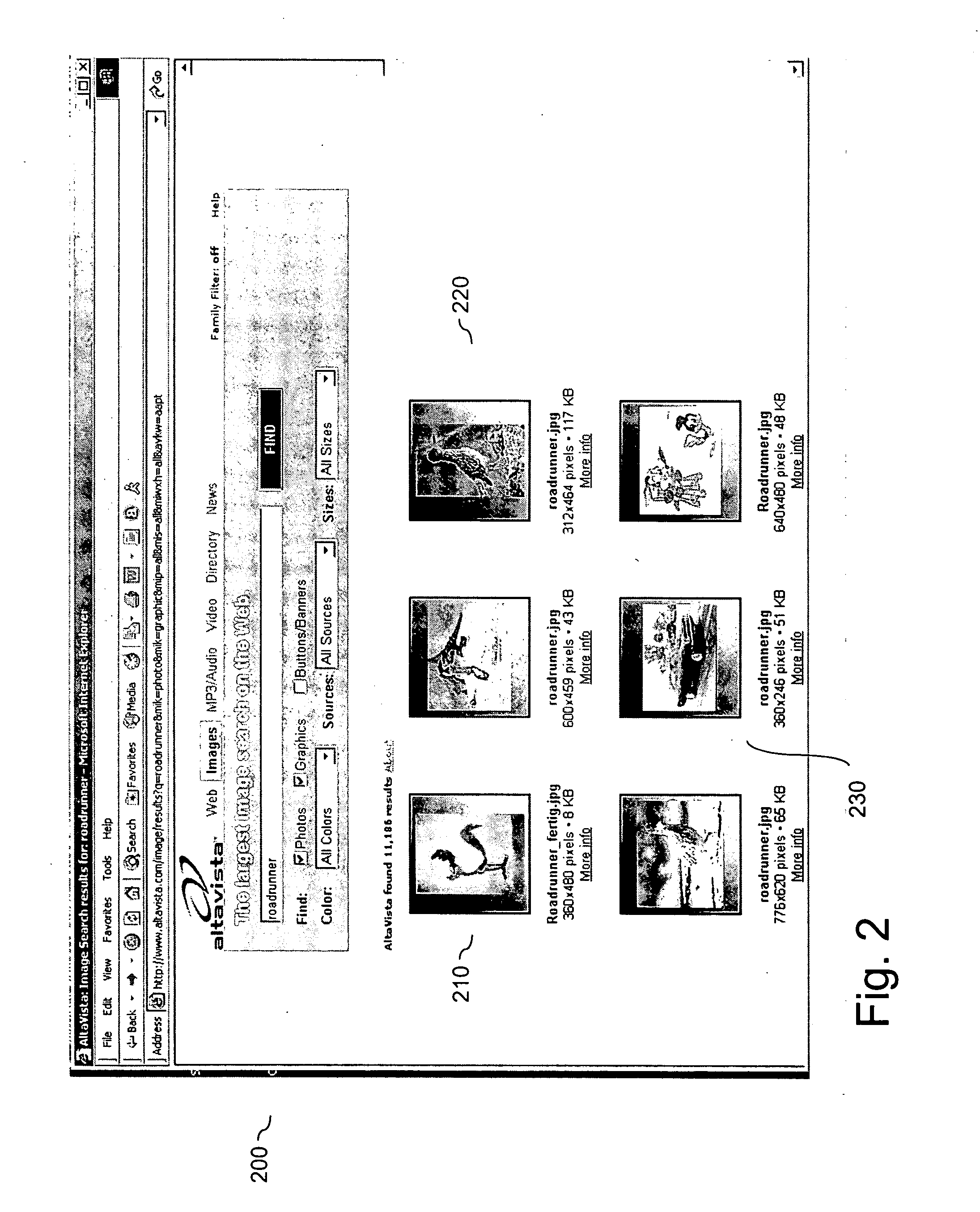Click-through re-ranking of images and other data
a search engine and image technology, applied in the field of search engines, can solve the problems of high number of search results that are not what the user sees, no search engine can tell, and methods that work well for text, etc., and achieve the effect of overcompensating deficiencies and limitations
- Summary
- Abstract
- Description
- Claims
- Application Information
AI Technical Summary
Benefits of technology
Problems solved by technology
Method used
Image
Examples
Embodiment Construction
[0019]FIG. 1 is a block diagram of a browser 100 retrieving a web page with search results from a server 110, which uses an embodiment of the present invention. Browser 100 sends a query 102 to a search engine server 110. This query may be sent over a network such as the Internet, or between components using any appropriate method of communicating data. Search engine server 110 returns search results 104, which are preferably displayed by browser 100.
[0020] Search engine server 110 uses an index 120 or similar predetermined mechanism to determine what search results most closely match the user's query. The described embodiment relates to a query that has specified an image search. As will be described in more detail below, an index engine 130 uses information about previous user clicks for the query to determine what images are most likely to match what the user is looking for when he or she enters a particular query. Thus, index engine 130 maintains a log 140 of user click informa...
PUM
 Login to View More
Login to View More Abstract
Description
Claims
Application Information
 Login to View More
Login to View More - R&D
- Intellectual Property
- Life Sciences
- Materials
- Tech Scout
- Unparalleled Data Quality
- Higher Quality Content
- 60% Fewer Hallucinations
Browse by: Latest US Patents, China's latest patents, Technical Efficacy Thesaurus, Application Domain, Technology Topic, Popular Technical Reports.
© 2025 PatSnap. All rights reserved.Legal|Privacy policy|Modern Slavery Act Transparency Statement|Sitemap|About US| Contact US: help@patsnap.com



